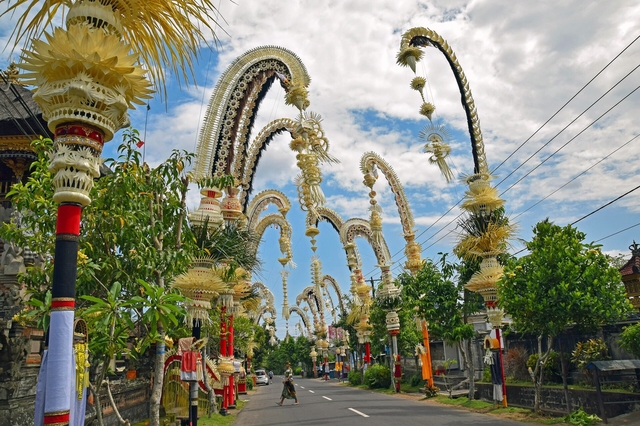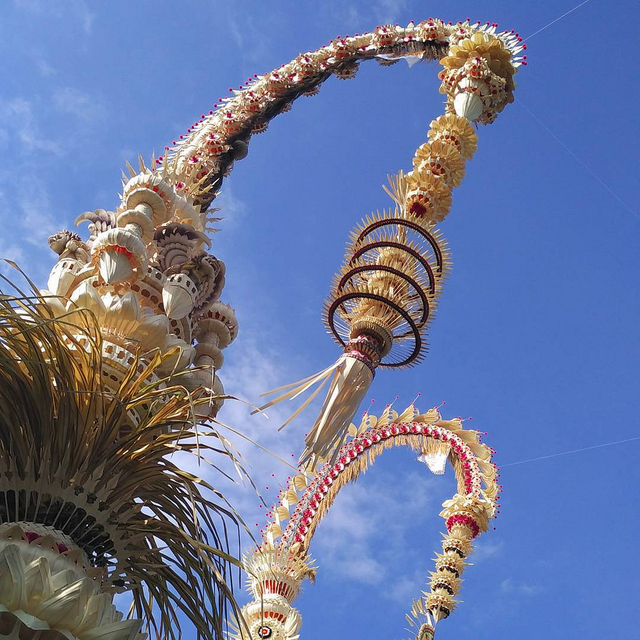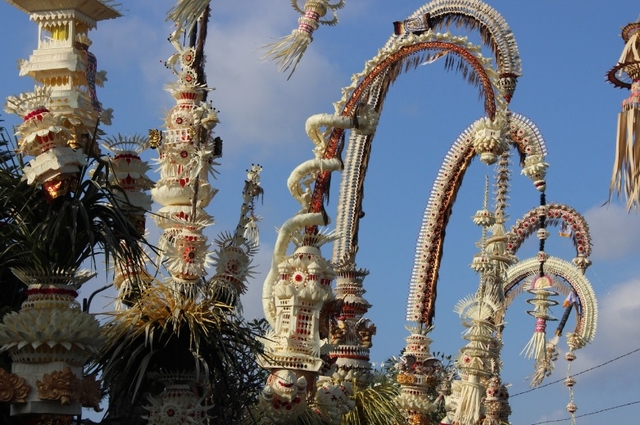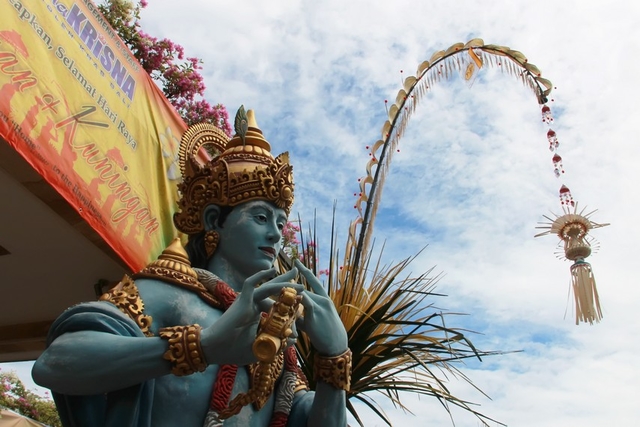
Many of you, on the eve of the Galungan holiday, notice bamboo poles set up along the roads, adorned with intricate decorations made from dried leaves, colorful fabrics, coconuts, fruits, rice creations, small altars, and other elements.
Tourists often wonder: why are these poles set up and what symbolic significance do they carry?
Such a pole is called a "penjor," and it is erected at the entrances of Balinese Hindu homes before the Galungan holiday. The penjor holds several symbolic meanings.
Each element of the penjor is associated with a specific deity. Bamboo is linked to Lord Brahma, coconut to Lord Rudra, yellow fabric to Sangkara, nutmeg to Lord Vishnu, sugarcane leaves to Dewa Sambu, rice to Devi Sri, white fabric to Lord Ishvara, and the altar to Lord Shiva.

One of the most common explanations is that the "penjor" is a symbol of Mount Agung, the most important mountain in Bali. It is considered the abode of gods and ancestors, representing the sacred Hindu mountain "Mahameru" and thus symbolizing the entire universe.
In this interpretation, the pinnacle of the penjor represents the peak of Mount Agung, while the stem of the penjor with all its decorations represents the rivers flowing down the mountain's slope, bringing the fullness of the land to the people below.

Some interpreters claim that the "penjor" symbolizes powerful dragon deities known as "nagas." The Nagas, Anantaboga and Basuki, are associated with earthly human needs and represent water, prosperity, and safety, respectively.
According to this theory, the head of the naga is located at the base of the penjor, just above a small shrine for offerings called "Sangah Arda Candra."
The tail of the naga is depicted as the graceful slender end of the penjor, while the dragon's back scales are represented by decorations curving along the length of the penjor pole.

Some say that the straight part of the bamboo symbolizes the "good" in a person, while the curved part represents the "bad," and therefore it needs to be beautifully decorated to compensate for it.
The height of the penjor symbolizes strength and moral fortitude that people aspire to achieve.
The curve of the penjor, with a straight spine and a downward-pointing end, should remind people that even though they may have attained a high status in life, they should never lose sight of their less fortunate fellow beings.
The descending nature of the penjor should always remind us of our common roots; we are all born from the womb of a mother, and this shared origin places a collective responsibility on us for each other's well-being.
You can add one right now!